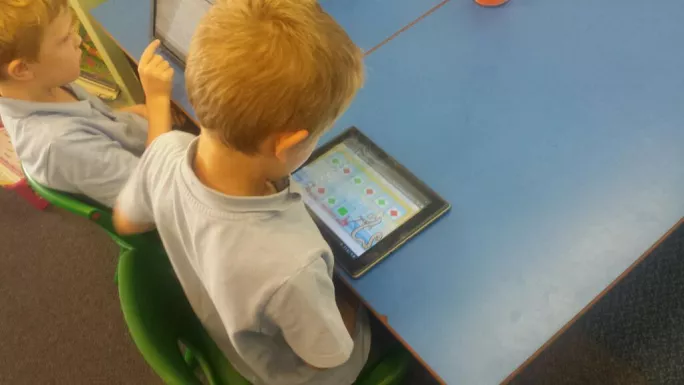How to bring technology to your literacy lessons
This is the second installment of our series of blogs by James Holmes, a class teacher at Abbas and Templecombe Primary School in Somerset, who reveals the challenges he faces as he implements the new computing curriculum at his school.
While spending time in schools supporting staff adapting to the new computing curriculum, I’ve been surprised at how quickly some schools purchase new equipment only to have it delivered with no one prepared to set it up, let alone use it to deliver effective teaching. The attitude seems to be: it’s a new programme of study, so we need iPads.
Technology should be seen as a teaching tool, something to enhance the experience of learners in class, not as a shiny new piece of equipment to give children, or to be used as classroom laptops are already used, for internet research. So when my school decided to buy 15 Android tablets, I was determined they be used effectively as a teaching tool and not just pulled out of the cupboard once a week.
I was eager to see how I could use the tablets in my lessons, but I encountered a problem. I would spend hours searching the internet for apps that could tie in with my literacy or numeracy lessons, but struggled to find anything that matched my units. Consequently, the tablets ended up being used as a plenary aid, delivering online games that I’d normally display on the whiteboard - not quite what I had been hoping for.
So I decided to take a new tack; this time, I planned my literacy lessons based around a single app instead of searching for an app that matched what I had planned.
I explored apps that teachers had recommended online and discovered the augmented reality app, Aurasma which allows you to super-impose a range of animated characters on top of whatever the camera on your device is looking at.
My first trial of this was with my Year 1 and 2 class. We read The Whales’ Song and I asked them to draw a detailed picture of the story’s island setting. The next lesson, I laid their maps on the tables ready for them, introduced the Aurasma app and simply told them we were going to take photos of our maps.
However, when the children looked at their pictures via the tablets you could hear an incredible roar of excitement - their maps had been invaded by pirates! From the moment the children saw the animated pirate ships sailing around their island, they were hooked. We started to discuss what might have happened to the characters in the story.
The next week was spent planning their own stories based on pirates arriving at the island and the quality of the writing that came from the children was better than any I had seen before - all because the children had become enthused and energised by what they’d seen. Reluctant writers from my class now happily sat writing because they were so engaged with the idea from the start.
Technology is making its way into our classrooms and it’s vital that, as teachers, we not only embrace it but ensure we don’t allow it to change the already great teaching that is happening in our classrooms.
Keep reading for just £1 per month
You've reached your limit of free articles this month. Subscribe for £1 per month for three months and get:
- Unlimited access to all Tes magazine content
- Exclusive subscriber-only stories
- Award-winning email newsletters




